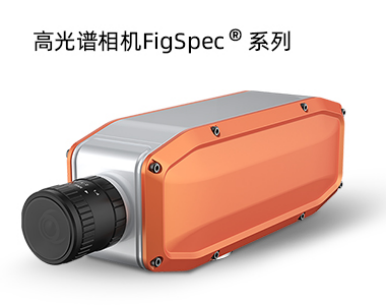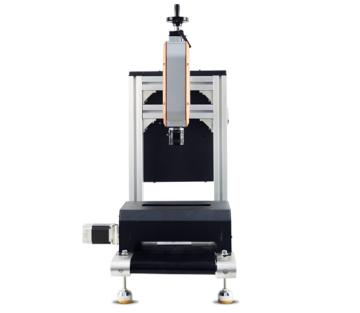In this study, a 400-1000nm hyperspectral camera can be used, and the products of Hangzhou Color Spectrum Technology Co., LTD
FS13 conducts related research. The spectral range is 400-1000nm, and the wavelength resolution is better than 2.5nm, up to 1200
Two spectral channels. Acquisition speed up to 128FPS in the full spectrum, up to 3300Hz after band selection (multi-zone support
Domain band selection).
With the promotion of potato staple grain strategy in China, potato related industry chain has been rapidly developed, and potato quality has become a hot issue. However, defects such as green skin and mechanical damage seriously affect the overall quantity of potatoes, especially the complex shape of green skin potatoes, defects are not easy to identify and increase the difficulty of detection. At the same time, if the content of solanin in green potato exceeds the edible standard, it will lead to food poisoning and cause food safety problems. Therefore, it is of great significance to study a fast and non-destructive detection method for potato deep processing and extension of potato industry chain.
Hyperspectral imaging technology has the advantages of wide band range, and can obtain the image and spectral information in the corresponding band range of the tested sample at the same time, so it has been widely used in rapid non-destructive testing of agricultural products. In order to solve the problem that the potato with light green skin is not easy to recognize under arbitrary position, the semi-transmission and reflection hyperspectral imaging techniques were used to compare and analyze, and the model recognition accuracy under different hyperspectral imaging methods was determined. The semi-transmitted hyperspectral and reflected hyperspectral images of potato samples were collected at any position, and detection models based on image information and spectral information were established respectively, and the recognition rates of different models were compared. Further establish image and spectrum fusion models or different imaging fusion models to improve model performance, and finally determine the optimal model.
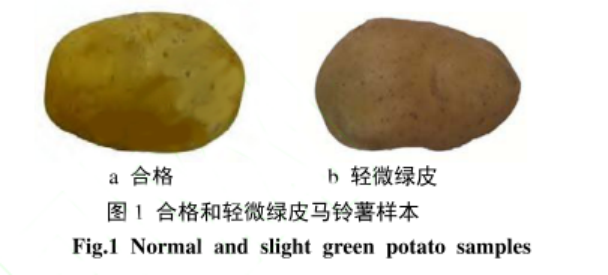
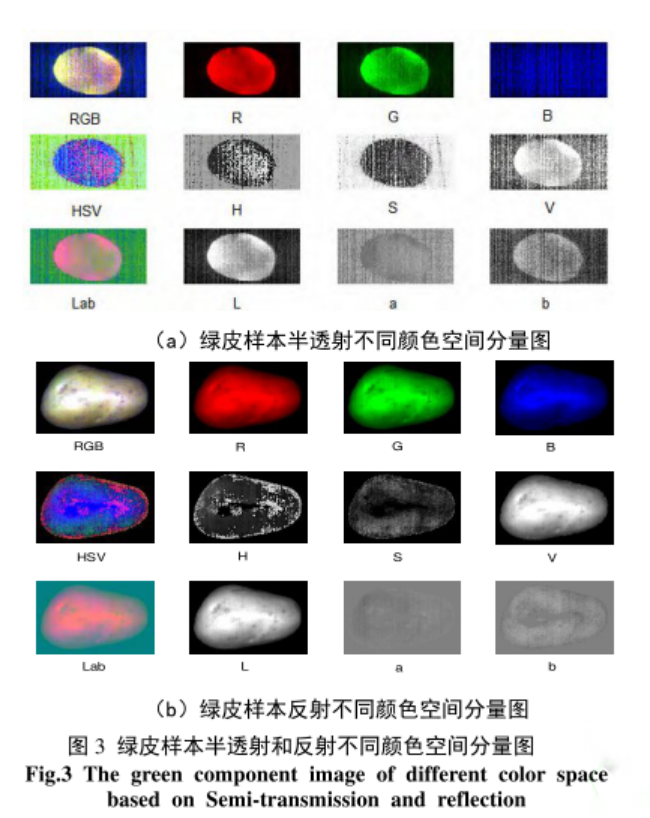
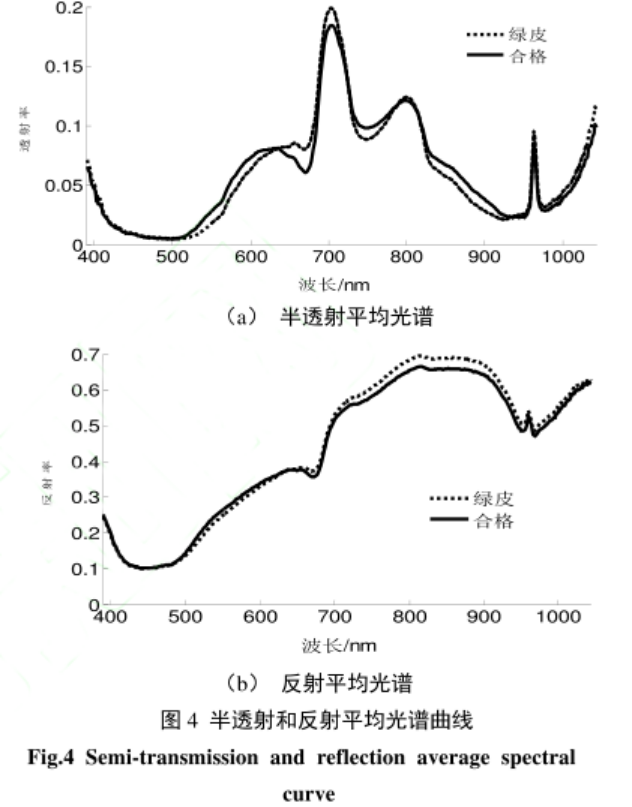



(1) The accuracy of image information recognition models with different hyperspectral imaging methods is compared. The recognition rate of isometric mapping combined with deep belief network model based on semi-transmitted image information is only 78.67%. The recognition rate of the maximum variance expansion combined with deep belief network model based on reflected image information is only 77.33%. The results showed that the accuracy of the detection of light green potato by single image information was not high.
(2) The accuracy of spectral information recognition models with different hyperspectral imaging methods is compared. The recognition rate of local tangent space arrangement combined with deep belief network model based on semi-transmission spectrum information is the highest 93.33%. The recognition rate of local tangent spatial arrangement combined with deep belief network model based on reflectance spectral information is up to 90.67%. The results show that it is feasible to use single spectral information to detect light green potatoes, but the recognition rate needs to be further improved.
(3) The influence of three multi-source information fusion methods on the recognition accuracy is compared. The accuracy of the three fusion models of semi-transmitted image and semi-transmitted spectrum, reflected image and reflection spectrum, semi-transmitted spectrum and reflection spectrum is higher than that of single image or spectral model, and the deep belief network fusion model of semi-transmitted spectrum and reflection spectrum is the best, and the recognition rate of correction set and test set is 100%. The results show that the fusion model of semi-transmission spectrum and reflection spectrum can realize the nondestructive testing of light green skin potato.


